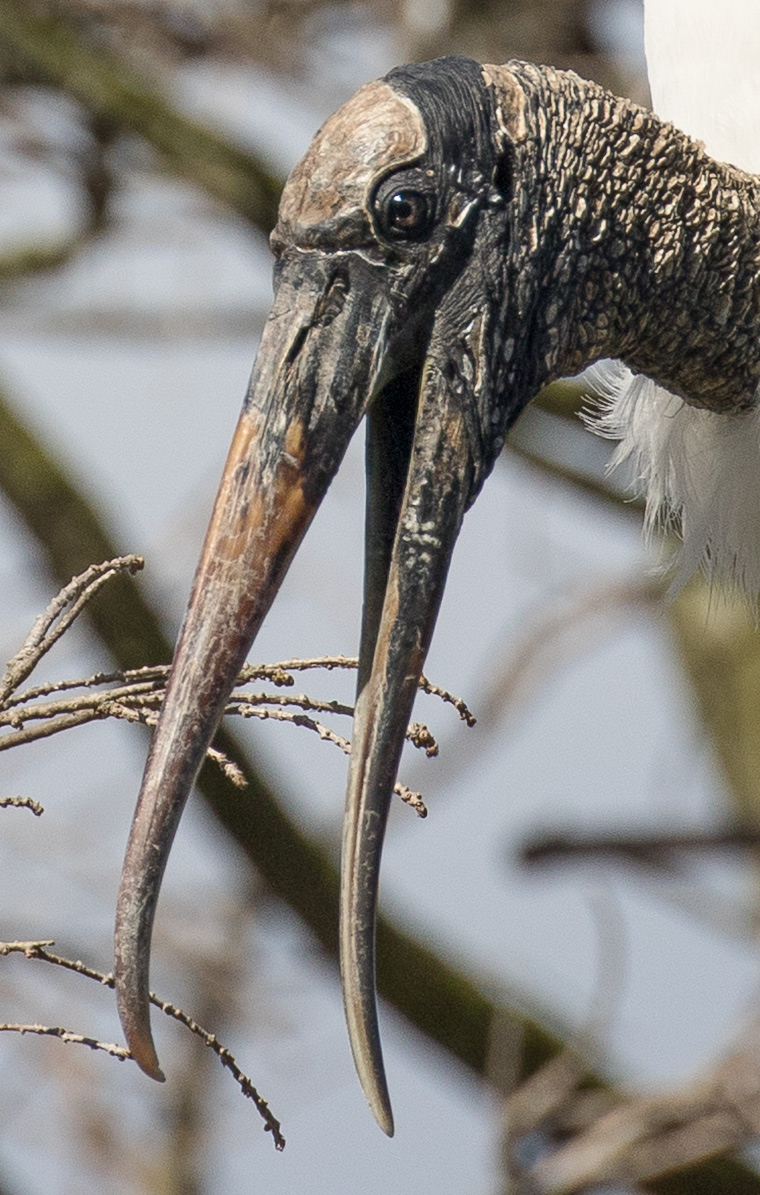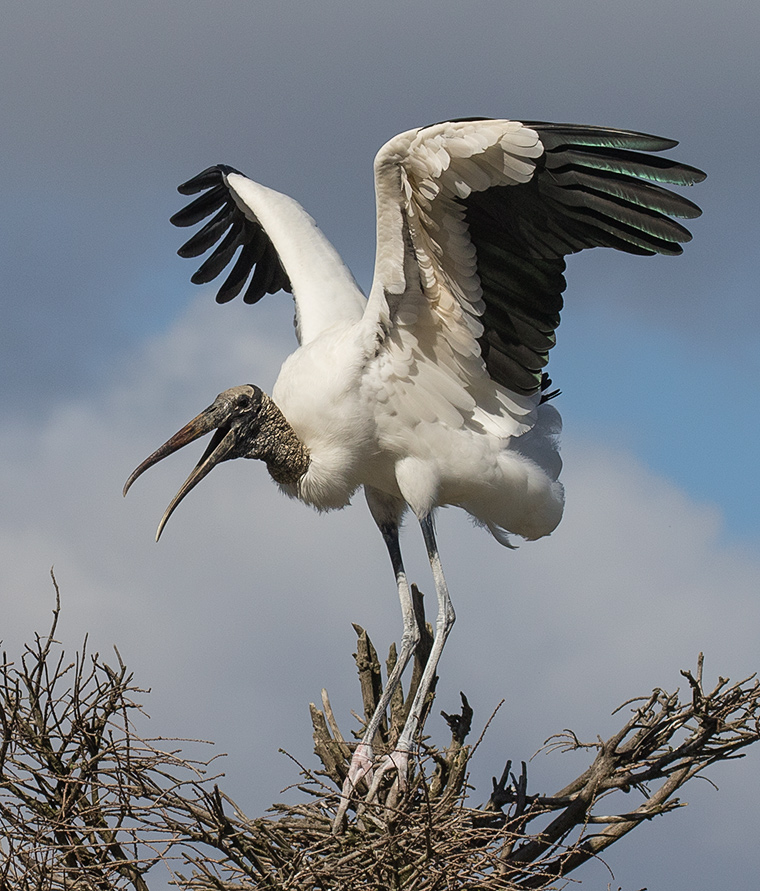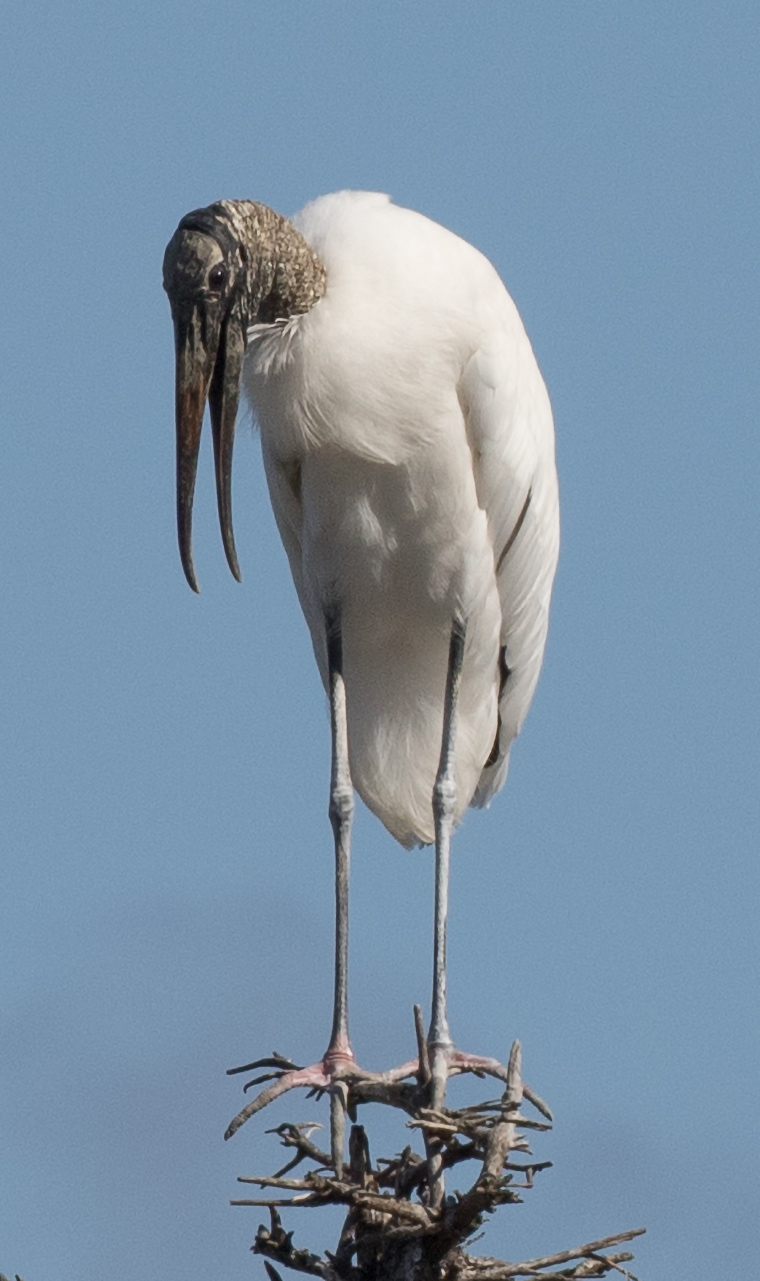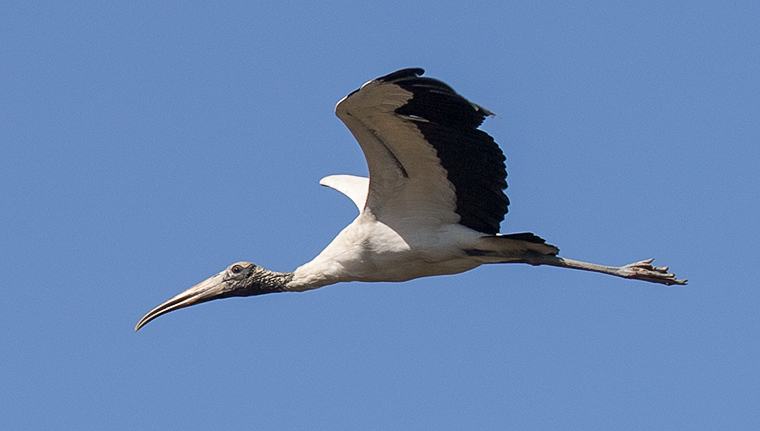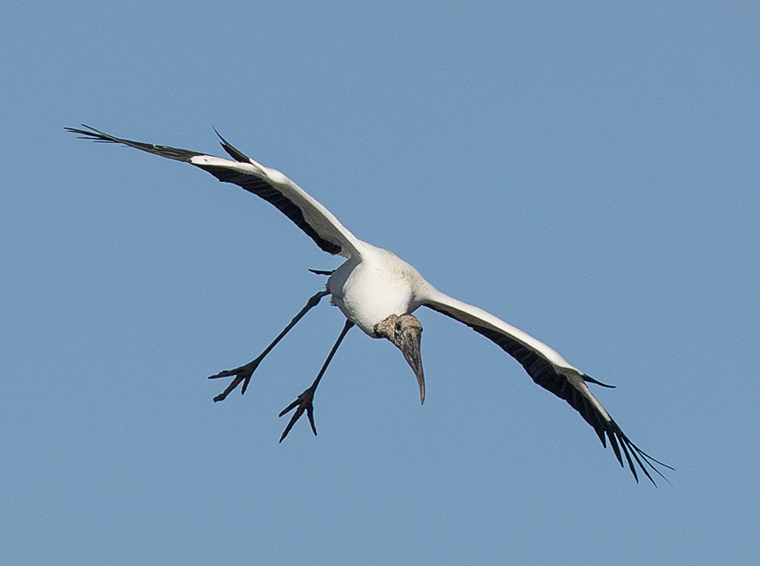Which bird has this very distinctive head?
Actually it is the head of an amazing bird, a Wood Stork (Mycteria americana. [Mcteria is from the Greek word for “snout” so the scientific name is “the American Snout” in reference to its long beak]). We saw these at the rookery near the Georgia coast, where they were nesting with the Great Egrets described in my preceding post. Their black and white feathers are very striking. If you look carefully, you can see the green sheen on some of the black wing feathers. This one has either started to build its nest of stick or is standing on the remnants of last year’s nest. Eventually the nest may reach three feet or more in diameter.
Wood Storks are found in a large part of South America, through Central American and the Caribbean. In the U.S., they are found in Florida and breed in a few coastal localities in Georgia and South Carolina. The are not considered to be migratory, but the Georgia and South Carolina birds move to Florida for the winter. They are social birds, usually foraging in groups and nesting together in a rookery such as the one the has appeared my recent posts.
Wood Storks are large birds, and they look quite robust. Their wing span is up to six feet and counting their long legs, they stand about four feet tall. Their legs are dark gray in color, but in warm weather they regularly defecate on their legs, and this produces the light gray color seen in the photographs above. This habit is shared by certain new world vultures and apparently helps to cool the birds.
Wood Storks are very capable flyers, and they are very adept at soaring in the manner of vultures or eagles. They soar with their legs and neck extended, and their white bodies and black wing feathers make a very distinctive sight.
This photograph shows a stork inbound for a landing at the rookery. The small object protruding from the leading edge of each wing is the birds “thumb” or first digit, which of course has a special name the “alula”. In normal flight the alula is held close to the wing. When coming in for a landing the bird needs to reduce its speed without stalling, The alula is then extended and changes the air flow over the wind so that a higher angle of attack and a slower speed can be achieved. This is very similar to the way that the slats on the leading edge of an airplane function. The next time you fly on a commercial jet, watch the leading edge slats extend during landing. The storks thought of it first!

